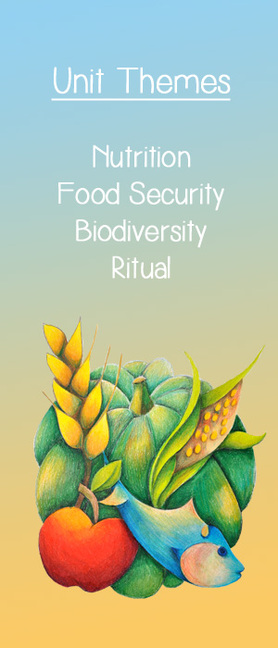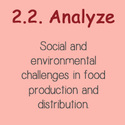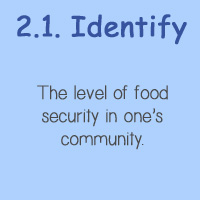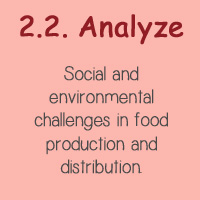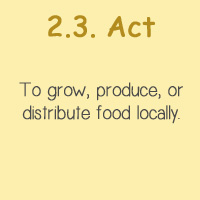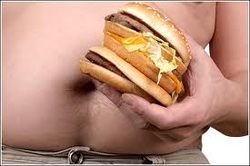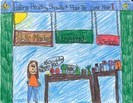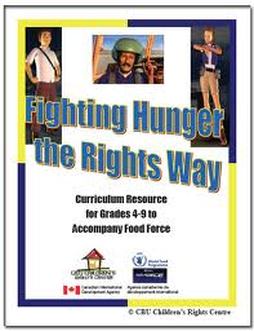Classroom Learning Activities
|
1. Malnutrition
Malnutrition affects many children when they don't have enough food to eat. This child is being measured to determine how malnourished he is - red indicates danger!
Malnutrition can also occur when we eat lots of food, but not the right kinds. Foods high in salt, fat, and sugar are not nourishing for our bodies.
|
The Hidden Hunger
A malnourished person finds that their body has difficulty doing normal things such as growing and resisting disease. Physical work becomes problematic and even learning abilities can be diminished. For women, pregnancy becomes risky and they cannot be sure of producing nourishing breast milk. When a person is not getting enough food or not getting the right sort of food, malnutrition is just around the corner. Disease is often a factor, either as a result or contributing cause. Even if people get enough to eat, they will become malnourished if the food they eat does not provide the proper amounts of micronutrients - vitamins and minerals - to meet daily nutritional requirements. Malnutrition is the largest single contributor to disease, according to the UN's Standing Committee on Nutrition (SCN). Malnutrition at an early age leads to reduced physical and mental development during childhood. Stunting, for example, affects more than 147 million pre-schoolers in developing countries, according to SCN's World Nutrition Situation 5th report. Iodine deficiency, the same report shows, is the world's greatest single cause of mental retardation and brain damage. Undernutrition affects school performance and studies have shown it often leads to a lower income as an adult. It also causes women to give birth to low birth-weight babies. |
Nutrition: Right Food, Right Time
World Food Programme When you view this movie:
|
|
2. Food Security
Brooke, Age 9, Victoria, British Columbia, Canada
|
|
|
3. Fighting Hunger the Rights Way
The activities in Fighting Hunger the Rights Way were designed to use the United Nations Convention on the Rights of the Child (UNCRC) as a framework for teaching students about malnutrition and related topics. Children’s rights are a fundamental theme in activities in this resource (e.g., viewing child malnutrition as a violation of children’s rights). It is important that students consider children’s rights when completing each activity (see pages 6-7 for more details regarding some of the specific rights focused on in this resource). It is also important for teachers to ensure that students keep an optimistic attitude when completing activities. Students should feel that youth can have a positive impact on their community, country and/or world.
The introductory activities should be completed prior to all other activities. Students will need to have a general understanding of the Convention on the Rights of the Child and World Food Programme’s (WFP) Food Force game in order to complete activities in Fighting Hunger the Rights Way. Students should be introduced to the Convention through the introductory activities in the Food Unit first, and then to Food Force, so that they may view child malnutrition as a violation of children’s rights and humanitarian aid as efforts to attain and adhere to children’s rights. |
Relevant Convention Articles
Article 6
1. States Parties recognize that every child has the inherent right to life.
2. States Parties shall ensure to the maximum extent possible the survival and development of the child.
Article 24
1. States Parties recognize the right of the child to the enjoyment of the highest attainable standard of health and to facilities for the treatment of illness and rehabilitation of health. States Parties shall strive to ensure that no child is deprived of his or her right of access to such health care services.
2. States Parties shall pursue full implementation of this right and, in particular, shall take appropriate measures:
(a) To diminish infant and child mortality;
(b) To ensure the provision of necessary medical assistance and health care to all children with emphasis on the development of primary health care;
(c) To combat disease and malnutrition, including within the framework of primary health care, through, inter alia, the application of readily available technology and through the provision of adequate nutritious foods and clean drinking-water, taking into consideration the dangers and risks of environmental pollution;
(d) To ensure appropriate pre-natal and post-natal health care for mothers;
(e) To ensure that all segments of society, in particular parents and children, are informed, have access to education and are supported in the use of basic knowledge of child health and nutrition, the advantages of breastfeeding, hygiene and environmental sanitation and the prevention of accidents;
(f) To develop preventive health care, guidance for parents and family planning education and services.
3. States Parties shall take all effective and appropriate measures with a view to abolishing traditional practices prejudicial to the health of children.
4. States Parties undertake to promote and encourage international co-operation with a view to achieving progressively the full realization of the right recognized in the present article. In this regard, particular account shall be taken of the needs of developing countries.
1. States Parties recognize that every child has the inherent right to life.
2. States Parties shall ensure to the maximum extent possible the survival and development of the child.
Article 24
1. States Parties recognize the right of the child to the enjoyment of the highest attainable standard of health and to facilities for the treatment of illness and rehabilitation of health. States Parties shall strive to ensure that no child is deprived of his or her right of access to such health care services.
2. States Parties shall pursue full implementation of this right and, in particular, shall take appropriate measures:
(a) To diminish infant and child mortality;
(b) To ensure the provision of necessary medical assistance and health care to all children with emphasis on the development of primary health care;
(c) To combat disease and malnutrition, including within the framework of primary health care, through, inter alia, the application of readily available technology and through the provision of adequate nutritious foods and clean drinking-water, taking into consideration the dangers and risks of environmental pollution;
(d) To ensure appropriate pre-natal and post-natal health care for mothers;
(e) To ensure that all segments of society, in particular parents and children, are informed, have access to education and are supported in the use of basic knowledge of child health and nutrition, the advantages of breastfeeding, hygiene and environmental sanitation and the prevention of accidents;
(f) To develop preventive health care, guidance for parents and family planning education and services.
3. States Parties shall take all effective and appropriate measures with a view to abolishing traditional practices prejudicial to the health of children.
4. States Parties undertake to promote and encourage international co-operation with a view to achieving progressively the full realization of the right recognized in the present article. In this regard, particular account shall be taken of the needs of developing countries.
Online Resources and References
World Food Programme - Fighting Hunger Worldwide

